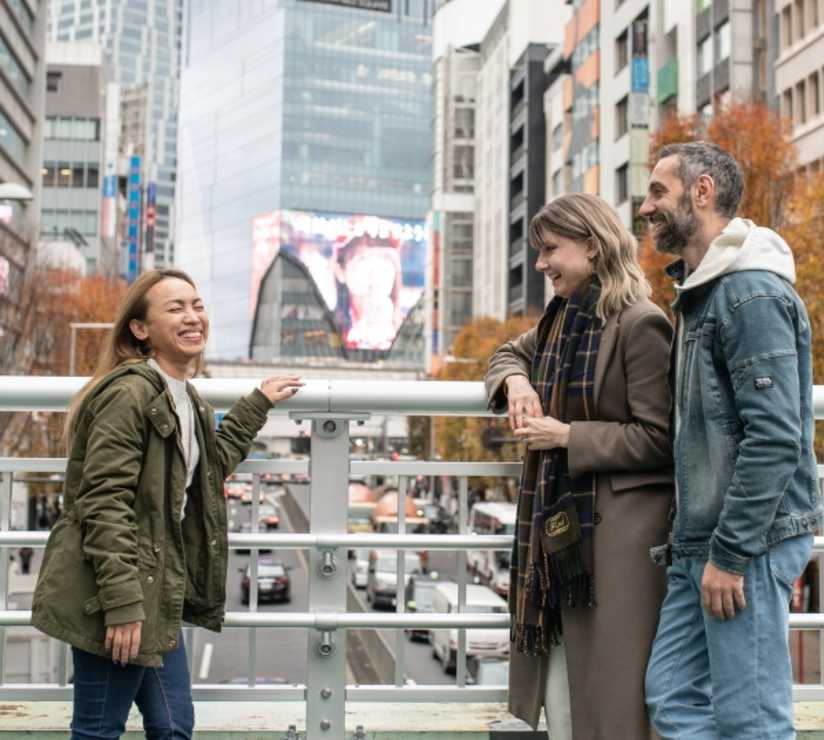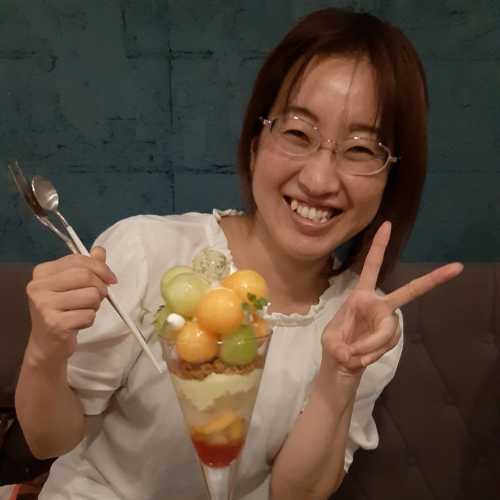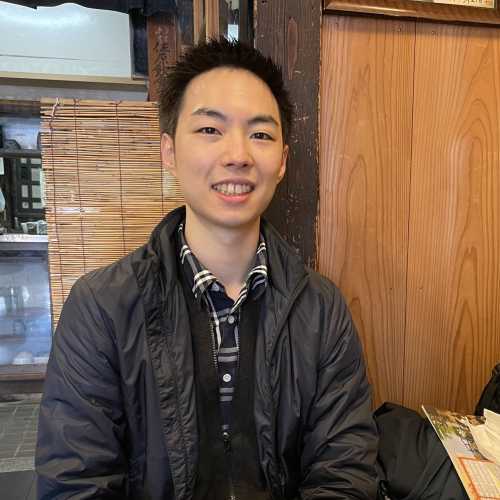Table Of Contents
- Why Tokyo's Rainy Season Brings Its Own Magic
- Hot Springs: Your Perfect Rainy Day Refuge
- Indoor Theme Parks: Where Weather Doesn't Matter
- Cultural Escapes: Museums and Art During Rain
- Shopping and Indoor Markets: Retail Therapy with Atmosphere
- Food Adventures: Warming Up from the Inside
- Winter-Specific Rainy Day Activities
- Practical Tips for Rainy Day Tokyo Exploration
- Hidden Gems That Shine in Rain
- Seasonal Considerations: Spring vs Winter Rain
- Making the Most of Your Rainy Tokyo Trip
The best things to do in Tokyo on a rainy day aren't about sheltering from storms. They're about embracing a different rhythm, one where warm baths replace hurried walks and quiet cultural moments take center stage over crowded outdoor attractions.
Why Tokyo's Rainy Season Brings Its Own Magic
Japan's rainy season typically runs from early June through mid-July, though winter months bring their own share of drizzly afternoons. I've noticed that visitors often panic when they see rain in the forecast, but locals know something different: this is when Tokyo reveals its more intimate side.
The city transforms under gray skies. Streets reflect neon signs in puddles, creating natural art installations. The usual crowds thin out, leaving space to breathe in museums and galleries. Even the air feels different, cleaner, softer, carrying the scent of wet earth from hidden garden spaces tucked between concrete and steel.
During the colder months, rainy weather adds another layer of coziness to indoor experiences. Steam from hot springs mingles with condensation on windows. Warm food tastes better. Conversations flow easier in the gentle acoustic dampening that rain provides.
Hot Springs: Your Perfect Rainy Day Refuge
Nothing beats soaking in a hot spring when rain drums against the windows. Tokyo might be a concrete jungle, but it sits on volcanic ground, blessing us with natural onsen experiences right in the city center.
Traditional Onsen Experiences
Oedo Onsen Monogatari offers the full traditional experience without leaving Tokyo. The outdoor hot spring areas become especially magical during light rain, there's something profound about being warm in mineral-rich water while cool droplets hit your face. The contrast awakens every sense.
The facility recreates an Edo-period town inside, complete with wooden walkways and traditional architecture. During rainy weather, fewer crowds mean more space to appreciate the craftsmanship and soak longer in the various pools.
Modern Spa Complexes
For visitors seeking a more contemporary approach, LaQua Spa in Tokyo Dome City combines hot spring waters with modern amenities. Floor-to-ceiling windows let you watch the rain while you're immersed in warm baths infused with different minerals.
The rooftop areas might close during heavy rain, but indoor facilities expand the experience. Saunas, relaxation rooms, and treatment areas provide hours of refuge from cold, wet weather outside.
Neighborhood Sento Culture
Local sento (public baths) offer the most authentic hot spring experience during a rainy day. These neighborhood gems cost less than tourist-focused facilities but provide deeper cultural immersion.
Rokuryu-kosen in Sumida ward maintains traditional architecture while offering genuine local atmosphere. The older clientele appreciates quiet visitors who respect bathing etiquette. Rain often brings neighbors together in these spaces, creating unexpected cultural exchanges.
Hot spring visits become a form of slow travel during rainy weather. You're not rushing between attractions, you're settling into Japanese rhythm and finding warmth that goes deeper than temperature.
Looking for a private city experience in Tokyo?
Explore the city with a local who plans a private day just for you; no groups, no scripts.
Indoor Theme Parks: Where Weather Doesn't Matter
Tokyo's indoor theme parks transform rainy days into adventures. These aren't just backup plans — they're destinations that shine brightest when outdoor attractions lose their appeal.
Tokyo Joypolis: Digital Entertainment Paradise
Located in Odaiba, Tokyo Joypolis spans multiple floors of interactive entertainment that makes you forget weather exists outside. The facility combines arcade games, virtual reality experiences, and unique attractions found nowhere else in Japan.
The Transformers ride becomes more immersive when you can't hear traffic or street noise filtering in. During the colder months, the heated indoor environment feels particularly welcoming after traveling across the city in damp weather.
Namjatown: Quirky Indoor Adventure
This Ikebukuro-based theme park might seem small, but its charm expands during rainy weather when you have time to appreciate every detail. The retro Japanese town recreation includes narrow alleyways, vintage storefronts, and hidden corners perfect for exploration.
The gyoza stadium and ice cream city sections offer comfort food that tastes especially good on cold, wet days. These indoor theme parks understand that atmosphere matters as much as attractions — something particularly evident when rain creates a cozy cocoon effect.
Small Worlds Tokyo: Miniature Magic
Small Worlds Tokyo in Ariake showcases incredible miniature dioramas that demand close attention. Rain actually enhances this experience by encouraging slower observation and deeper appreciation for the craftsmanship.
The airport diorama operates tiny planes on schedules, while the Evangelion section recreates Tokyo-3 in stunning detail. During rainy weather, you can spend hours discovering new elements in each small world without feeling rushed to move on to outdoor attractions.
This attraction proves that seeking thrills doesn't always mean big, loud experiences. Sometimes wonder comes in miniature packages that reveal themselves slowly, like Tokyo itself on a gentle rainy day.
Cultural Escapes: Museums and Art During Rain
Tokyo's cultural scene expands during rainy weather as venues become refuges rather than quick stops between outdoor attractions. This shift in pace allows deeper engagement with Japanese culture and artistic expression.
teamLab Planets Tokyo: Digital Art Immersion
teamLab Planets Tokyo transforms completely during rainy visits. The water rooms feel more significant when actual rain falls outside, creating layers of water experience that wouldn't occur to you on sunny days.
The mirror rooms reflect not just light and digital projections, but the contemplative mood that rain brings. You move differently through the space, taking time to notice how digital cherry blossoms respond to your presence or how infinity rooms seem to extend beyond their physical boundaries.
Traditional Museums with Modern Relevance
The Tokyo National Museum in Ueno becomes a perfect rainy day destination, especially during winter months when fewer tourists compete for space near important artifacts. The building itself provides architectural interest, with traditional design elements that feel particularly relevant during quiet, contemplative weather.
Rain creates natural acoustic dampening that enhances the museum experience. You hear your own footsteps on wooden floors, notice the subtle sounds of other visitors, and appreciate silence in ways that busy sunny days don't allow.
Contemporary Art Galleries
Mori Art Museum in Roppongi Hills offers panoramic city views that become dramatically beautiful during rainy weather. City lights reflect off wet surfaces, creating art beyond the gallery walls.
The observation deck usually draws crowds for sunset views, but rain transforms it into a meditation space where you can watch weather systems move across Tokyo's urban landscape. This becomes part of the artistic experience rather than a distraction from it.
Shopping and Indoor Markets: Retail Therapy with Atmosphere
Department stores and covered shopping areas become more than retail destinations during rainy weather, they transform into complete entertainment experiences that showcase Japanese attention to detail and customer service.
Department Store Food Floors
Basement food courts (depachika) in major department stores offer incredible variety and quality that rivals any restaurant experience. During rainy weather, these spaces provide warmth, comfort, and discovery opportunities.
Takashimaya's basement level in Nihonbashi showcases regional specialties from across Japan, allowing you to travel the country's culinary landscape without leaving the building. The prepared food sections offer perfect rainy day comfort, warm rice dishes, fresh seafood, and seasonal ingredients prepared by expert chefs.
Underground Shopping Networks
Tokyo's underground shopping networks become fascinating exploration territories during bad weather. The passage connecting Tokyo Station to surrounding buildings creates a small world of shops, restaurants, and services that many tourists never discover.
These underground areas maintain comfortable temperatures year-round and connect to major transportation hubs, making them practical bases for rainy day adventures. You can travel significant distances without getting wet while discovering hidden gems tucked into corridors and side passages.
Traditional Markets with Modern Covers
Ameya-Yokocho (Ameyoko) near Ueno Station provides covered market experiences that feel authentic rather than touristy. During rain, the narrow passages and low ceilings create intimate shopping environments where vendors and customers interact more personally.
The mix of traditional goods, vintage items, and street food creates layers of discovery that rainy weather encourages you to explore slowly. You notice details, the way light filters through plastic coverings, conversations between regular customers and vendors, the rhythm of commerce that continues regardless of weather.
What if your day in Tokyo was planned by someone who knows it — and you?
City Unscripted matches you with a local host who creates a private experience based on your interests, not a set route.
Food Adventures: Warming Up from the Inside
Rainy weather transforms Tokyo's food scene from quick bites between sightseeing into leisurely exploration experiences. Comfort food tastes better when consumed as refuge from cold, wet weather outside.
Ramen as Rainy Day Medicine
Ichiran Ramen locations throughout Tokyo provide individual booth experiences that feel particularly cozy during rainy weather. The concentrated flavors and steaming bowls create perfect contrast to cold dampness outside.
Traditional ramen shops (ramenya) become community gathering places during rain. Regular customers linger longer, creating opportunities for cultural observation and sometimes interaction. The sound of rain on tin roofs mixing with conversation and slurping creates uniquely Tokyo atmospheric experiences.
Izakaya Culture During Storms
Japanese pub culture (izakaya) expands during rainy evenings as locals seek warm, social environments. These establishments offer small plates perfect for extended stays and conversations that develop naturally over shared meals.
Torikizoku and similar chains provide affordable entry points into izakaya culture, while independent establishments offer more authentic experiences. During rainy weather, the boundary between tourist and local blurs as everyone seeks the same warmth and comfort.
Coffee Culture and Cafes
Tokyo's coffee culture shines during rainy weather when cafes become temporary homes rather than quick stops. Blue Bottle Coffee locations provide American-style experiences, while traditional kissaten (coffee shops) offer distinctly Japanese approaches to café culture.
Shibuya Sky observation deck might close during heavy rain, but nearby cafes offer ground-level people watching that becomes more interesting during weather. You see how Tokyo residents adapt their routines, fashion choices, and social behaviors to accommodate rain.
Winter-Specific Rainy Day Activities
Tokyo in winter combines cold temperatures with occasional rain, creating unique opportunities for seasonal experiences that wouldn't be possible during other times of year.
Snow Monkeys and Hot Springs Day Trips
While snow monkeys near Tokyo require guided tour arrangements, winter rainy weather often creates perfect conditions for observing these creatures in their natural hot spring environments. The contrast between cold rain and warm spring waters that monkeys enjoy mirrors human onsen experiences.
Day trips from Tokyo to nearby mountain areas become more meaningful during winter weather. You’ll often find yourself surrounded by a snowy backdrop, where the white landscape enhances the serene atmosphere of the hot springs. You return to the city with deeper appreciation for urban conveniences and indoor warmth after experiencing nature's raw winter conditions.
Indoor Gardens and Conservatories
Tokyo Midtown's indoor spaces and Roppongi Hills' covered areas provide climate-controlled environments that feel especially welcoming during cold rain. These modern developments combine shopping, dining, and cultural activities under single roofs.
The contrast between indoor comfort and outdoor weather creates appreciation for architectural thoughtfulness. Japanese design philosophy becomes more apparent when buildings successfully mediate between human comfort and natural conditions.
Winter Illuminations Under Cover
Tokyo's winter illumination displays often include covered viewing areas that remain accessible during rainy weather. Tokyo Station's surroundings, Marunouchi district lighting, and major shopping center displays provide magical experiences regardless of precipitation.
These light displays create different effects when viewed through rain-wet surfaces or from inside warm buildings looking out. Winter escape experiences become more poignant when weather emphasizes the seasonal nature of both darkness and artificial illumination.
Practical Tips for Rainy Day Tokyo Exploration
Successfully navigating Tokyo during rainy weather requires understanding local practices and infrastructure that make wet weather manageable rather than miserable.
Transportation During Rain
Tokyo's train system continues operating efficiently during most rainy weather, but platforms and stairs can become slippery. Station attendants often place additional safety signage and absorbent mats during wet conditions.
IC cards (Suica/Pasmo) work better than paper tickets during rain since they don't get damaged by moisture. Many stations provide umbrella holders and plastic bags for wet umbrellas, showing how infrastructure adapts to support rainy day mobility.
Umbrella Etiquette and Logistics
Convenience stores throughout Tokyo sell affordable umbrellas, but understanding umbrella etiquette improves your experience. Buildings provide umbrella stands at entrances, and many businesses offer plastic bags for wet umbrellas.
Hotels often provide loaner umbrellas, and some areas have community umbrella sharing programs. Learning to navigate Tokyo's umbrella culture becomes part of the authentic local experience rather than a tourist inconvenience.
Clothing and Comfort Strategies
Layered clothing becomes essential during Tokyo's rainy season and winter months. Buildings maintain warm temperatures, so you need clothing systems that adapt between outdoor cold/wet conditions and indoor comfort.
Waterproof shoes make enormous differences in comfort levels during extended rainy day exploration. Many Tokyo residents invest in quality rain gear rather than treating wet weather as something to simply endure.
Tip
We match you with the right host, not just any guide.Want to experience the real Tokyo with someone who lives there?
A fully private experience, planned and led by a local host who tailors the day to you
Hidden Gems That Shine in Rain
Some of Tokyo's most interesting experiences become available only during rainy weather when crowds disappear and alternative attractions reveal their true character.
Robot Restaurant Alternatives
While Robot Restaurant closed permanently, similar entertainment venues throughout Tokyo offer indoor spectacle experiences perfect for rainy evenings. These shows provide uniquely Japanese entertainment that makes weather irrelevant.
Kabukicho area venues continue providing elaborate dinner shows and entertainment experiences that fill rainy evening hours with distinctly Tokyo cultural experiences. The entertainment district takes on different character during rain when outdoor activities become less appealing.
Bookstores and Literary Cafes
Tsutaya Books locations throughout Tokyo combine retail, café, and cultural spaces that expand during rainy weather when customers linger longer. These venues showcase Japanese design approaches to combining commercial and cultural activities.
Independent bookstores in areas like Jimbocho become treasure hunting grounds during rainy afternoons when you have time to browse carefully through collections of used books, art publications, and specialty magazines.
Traditional Craft Workshops
Many craft studios and cultural centers offer drop-in workshops that provide perfect rainy day activities while teaching traditional Japanese arts. Pottery, calligraphy, and textile workshops become more appealing when outdoor alternatives aren't available.
These experiences connect you directly with Japanese culture through hands-on creation rather than passive observation. The focused, meditative nature of traditional crafts complements rainy weather's natural pace.
Seasonal Considerations: Spring vs Winter Rain
Different seasons bring distinct rainy day opportunities that showcase Tokyo's seasonal character and cultural rhythms.
Spring Rain and Cherry Blossoms
Rain during cherry blossom season creates poignant beauty as petals fall and collect in puddles. While outdoor hanami parties might be cancelled, indoor viewing opportunities from cafes, museums, and covered walkways provide intimate cherry blossom experiences.
Spring rain often alternates with clear periods, creating opportunities for brief outdoor moments between longer indoor explorations. This weather pattern encourages flexibility and spontaneity in daily planning.
Summer Rainy Season Atmosphere
Summer's rainy season brings consistent precipitation that transforms Tokyo's usual frenetic energy into slower, more contemplative rhythms. Air conditioning in indoor spaces provides relief from humidity as well as rain.
This season encourages exploration of Tokyo's covered markets, underground shopping networks, and climate-controlled entertainment venues that might feel excessive during pleasant weather but provide perfect refuge during hot, humid rain.
Autumn Rain and Changing Leaves
Autumn rain enhances the colors of changing leaves visible from windows of trains, cafes, and indoor observation decks. Parks like Ueno and Shinjuku Gyoen provide beautiful views even when walking through them isn't comfortable.
The season's shorter daylight hours mean that indoor activities extend naturally into early evening, creating longer, more relaxed exploration periods that suit rainy weather's contemplative mood.
Making the Most of Your Rainy Tokyo Trip
A rainy day in Tokyo isn't a day lost — it's an invitation to experience the city differently. The key lies in adjusting expectations and embracing opportunities that only emerge when weather forces a change of pace.
Flexibility as Travel Strategy
The best rainy day experiences often arise spontaneously when you notice an interesting building, stumble upon an unexpected shop, or discover a café that calls for extended lingering. Rigid itineraries work against rain's natural rhythm.
Building buffer time into daily plans allows for longer stays in places you discover, extended conversations with locals also seeking indoor refuge, and deeper appreciation for experiences that rushed sightseeing schedules don't accommodate.
Cultural Immersion Through Weather
Experiencing Tokyo during rainy weather provides insights into local life that sunny tourist days don't reveal. You see how residents adapt their routines, appreciate the infrastructure designed to support wet weather, and discover the cultural attitudes toward accepting and working with natural conditions.
This deeper cultural understanding becomes a valuable part of your trip that extends beyond specific attractions or activities. You return home with appreciation for Japanese approaches to finding comfort and beauty within challenging circumstances.
Creating Lasting Memories
Some of my most treasured Tokyo memories involve rainy days — conversations that developed over extended café stays, museum discoveries made during unhurried explorations, and the particular beauty of lights reflecting off wet surfaces.
Rain creates intimacy and atmosphere that sunny weather can't replicate. These experiences become stories you tell years later, when the specific attractions you visited might fade but the feeling of finding warmth and wonder during challenging weather remains vivid.
The magic of things to do in Tokyo on a rainy day isn't about having backup plans — it's about discovering that some of the city's best experiences reveal themselves only when you slow down enough to notice them.
Ready to explore Tokyo's rainy day magic? City Unscripted connects you with local hosts who know exactly where to find warmth, culture, and hidden gems when the weather turns gray. Our Tokyo experiences reveal the intimate side of the city that most visitors never discover — no umbrella required.
Whether you're planning things to do in Tokyo in winter or seeking shelter during an unexpected spring shower, a local perspective transforms rainy days from obstacles into opportunities for authentic cultural immersion.
Ready to plan your perfect day in Tokyo?
Start your experienceWhat if your day in Tokyo was planned by someone who knows it — and you?
City Unscripted matches you with a local host who creates a private experience based on your interests, not a set route.
Want to experience the real Tokyo with someone who lives there?
A fully private experience, planned and led by a local host who tailors the day to you











